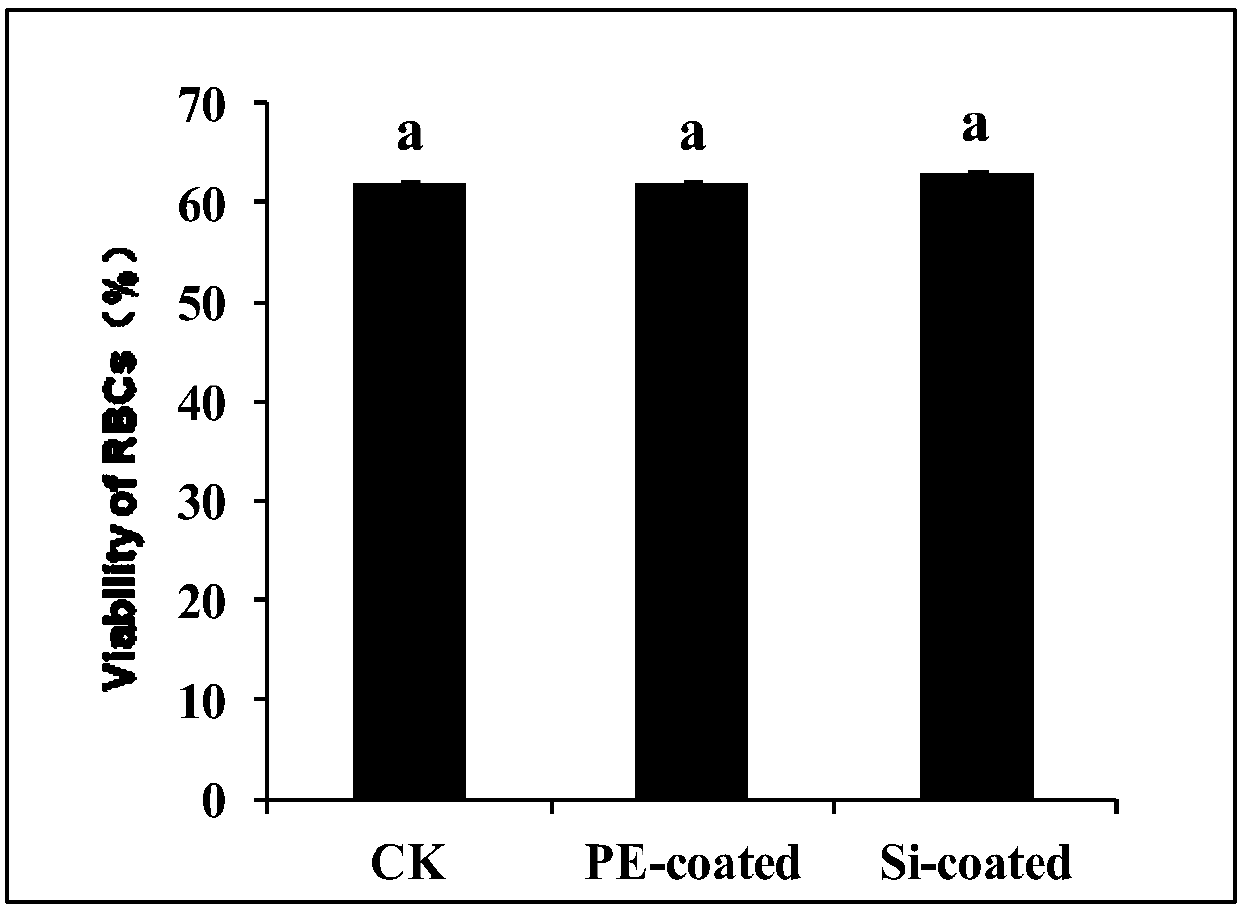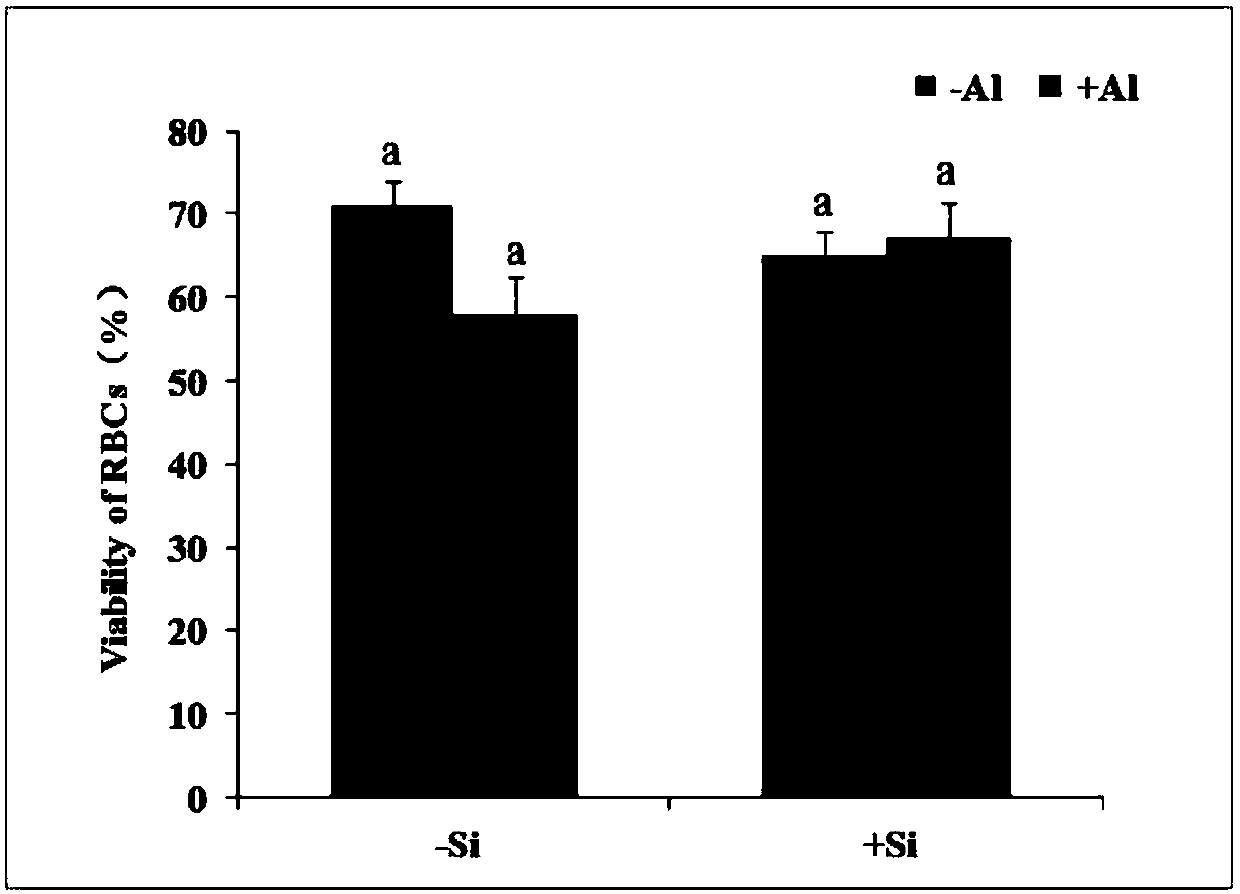Plant root border cell silicon coating treatment method
A technology of edge cells and treatment methods, which is applied in plant cells and other directions to achieve the effect of improving the ability of anti-aluminum poisoning
- Summary
- Abstract
- Description
- Claims
- Application Information
AI Technical Summary
Problems solved by technology
Method used
Image
Examples
Embodiment
[0027] A method for treating plant root edge cells coated with silicon, comprising the following process steps:
[0028] 1) Take the root tips of 1cm plant seedlings and place them in CaCl with a concentration of 2mmol / L 2 Stir the solution with a glass rod for 1 to 2 minutes to obtain a cell collection solution;
[0029] 2) Transfer the cell collection solution to CaCl containing 0.005mg / mL polyethyleneimine 2 Solution (CaCl 2 Solution concentration is 0.5mM / L, its pH value is 7.0), incubate 10min, CaCl 2 Solution washing 2 times;
[0030] 3) Transfer the solution obtained in step 2) to a silicic acid solution (methyl orthosilicate hydrolysis solution and CaCl 2 The solution was mixed according to the volume ratio of 50:950, the pH value was 7.0), incubated for 20min, and the cell surface was siliconized with CaCl 2 solution for cleaning.
[0031] The cell collection fluid obtained from the above-mentioned embodiment was subjected to related tests of cell activity and a...
PUM
 Login to View More
Login to View More Abstract
Description
Claims
Application Information
 Login to View More
Login to View More - R&D
- Intellectual Property
- Life Sciences
- Materials
- Tech Scout
- Unparalleled Data Quality
- Higher Quality Content
- 60% Fewer Hallucinations
Browse by: Latest US Patents, China's latest patents, Technical Efficacy Thesaurus, Application Domain, Technology Topic, Popular Technical Reports.
© 2025 PatSnap. All rights reserved.Legal|Privacy policy|Modern Slavery Act Transparency Statement|Sitemap|About US| Contact US: help@patsnap.com


